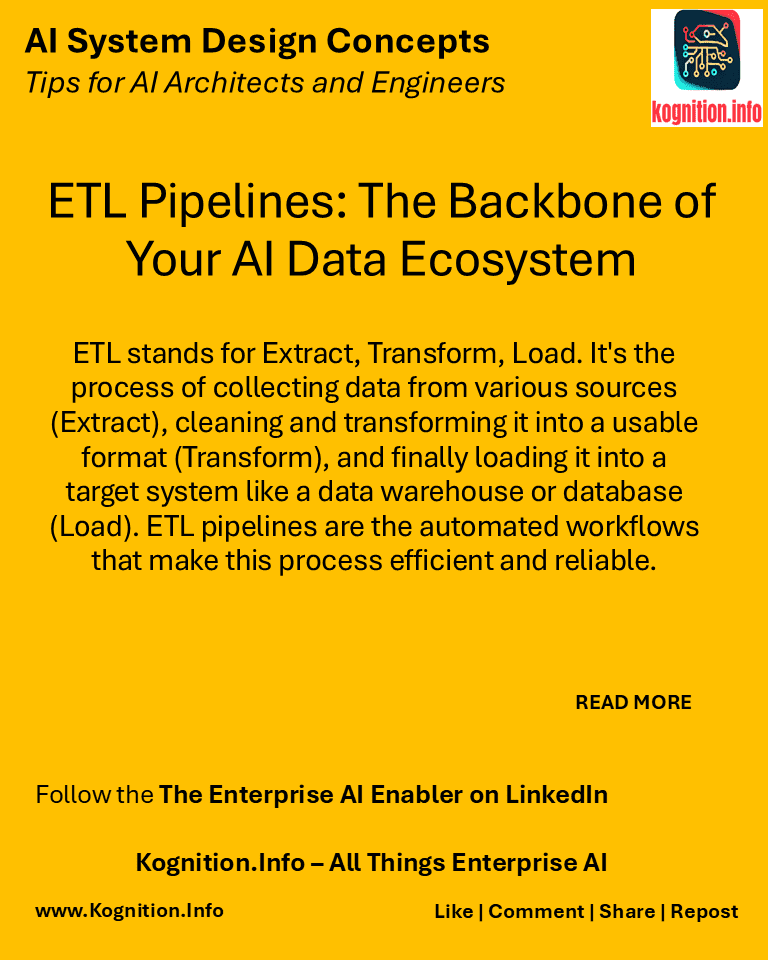
ETL stands for Extract, Transform, Load. It’s the process of collecting data from various sources (Extract), cleaning and transforming it into a usable format (Transform), and finally loading it into a target system like a data warehouse or database (Load). ETL pipelines are the automated workflows that make this process efficient and reliable.
Use cases:
- Business intelligence: Integrating data from different departments (sales, marketing, finance) to create a unified view of business performance.
- Machine learning: Preparing data for model training by cleaning, transforming, and aggregating it from multiple sources.
- Data migration: Moving data from legacy systems to modern databases or cloud platforms.
How?
- Identify data sources and target: Determine where your data resides and where it needs to go.
- Choose ETL tools: Select appropriate tools based on your needs and budget (e.g., Apache Airflow, Informatica PowerCenter, cloud-based solutions like AWS Glue).
- Design the pipeline: Define the steps involved in extracting, transforming, and loading the data.
- Implement data validation: Ensure data quality and consistency at each stage.
- Schedule and automate: Set up regular execution of the pipeline.
Benefits:
- Efficiency: Automates data integration, reducing manual effort and errors.
- Data quality: Improves data accuracy and consistency through cleaning and transformation.
- Scalability: Handles large data volumes and complex transformations.
Potential pitfalls:
- Data drift: Changes in source data can break the pipeline. Implement monitoring and alerts to detect and address data drift.
- Performance bottlenecks: Inefficient transformations or data transfer can slow down the pipeline. Optimize performance by using appropriate tools and techniques.
- Maintenance challenges: Complex pipelines can be difficult to maintain and update. Prioritize modularity and clear documentation.
